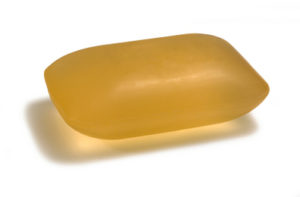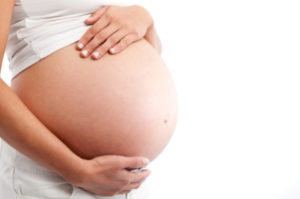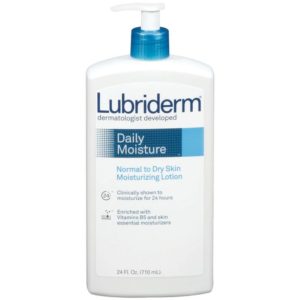 This week a forceful statement paper was issued by more than 200 hundred scientists and health professionals expressing serious concerns about triclosan and triclocarban. This statement, called The Florence Statement on Triclosan and Triclocarban, asked that the use of these widely used antimicrobials be restricted due to their risks to human health, to wildlife, and its accumulation in water, land, wildlife, and humans. They stated that the negatives outweigh any benefits, and they also questioned the use of other antimicrobials (because they also have similar health and environmental concerns).
This week a forceful statement paper was issued by more than 200 hundred scientists and health professionals expressing serious concerns about triclosan and triclocarban. This statement, called The Florence Statement on Triclosan and Triclocarban, asked that the use of these widely used antimicrobials be restricted due to their risks to human health, to wildlife, and its accumulation in water, land, wildlife, and humans. They stated that the negatives outweigh any benefits, and they also questioned the use of other antimicrobials (because they also have similar health and environmental concerns).
Not only do triclosan and triclocarban persist in the environment, they are also a source of toxic and carcinogenic compounds including dioxins, chloroform, and chlorinated anilines. They are endocrine disruptors that bioaccumulate (build-up) in humans and wildlife. They are toxic to aquatic and other organisms, yet they are found in the majority of people and freshwater streams. In other words, the chemicals are all around us and in us!
More than 2000 personal and consumer products, as well as building materials, contain triclosan and triclocarban. For example, they are found in soaps, toothpastes, detergents, clothing, toys, carpets, plastics, kitchen items, and paints. But the U.S. Centers for Disease Control and Prevention Healthcare Infection Control Practices Advisory Committee have concluded, “No evidence is available to suggest that use of [antimicrobial-impregnated articles and consumer items bearing antimicrobial labeling] will make consumers and patients healthier or prevent disease”. According to the FDA, which is responsible for regulation of foods, drugs, cosmetics, medical devices, and similar products, there is no evidence that antibacterial soaps are more effective than nonantibacterial soap and water. So why is it in so many products? It's a marketing gimmick!
What should one do? Read labels and avoid products containing triclosan, triclocarban, or anti-microbials, and products labeled anti-odor, antibacterial, or anti-germ. No, you don't need antibacterial or anti-odor socks or cutting boards! See earlier posts on this topic (here, here, and here). From Environmental Health News:
Hundreds of scientists call for caution on anti-microbial chemical use
Two ingredients used in thousands of products to kill bacteria, fungi and viruses linger in the environment and pose a risk to human health, according to a statement released today by more than 200 scientists and health professionals. The scientists say the possible benefits in most uses of triclosan and triclocarban—used in some soaps, toothpastes, detergents, paints, carpets—are not worth the risk.
The statement, published today in the Environmental Health Perspectives journal, urges “the international community to limit the production and use of triclosan and triclocarban and to question the use of other antimicrobials.” They also call for warning labels on any product containing triclosan and triclocarban and for bolstered research of the chemicals' environmental toll.
The statement says evidence that the compounds are accumulating in water, land, wildlife and humans is sufficient to merit action. The chemicals are used to kills microbes such as bacteria and viruses that make people ill. However, both chemicals affect animals’ hormone systems, causing reproductive and development problems. And there is nascent evidence that the impacts may extend to humans as well—having been linked to reduced growth of fetuses, earlier births, and lower head circumference in boys at birth.
U.S. manufacturers are phasing out triclosan from hand soaps after the Food and Drug Administration banned it last year amid concerns that the compound disrupted the body's hormone systems. The FDA noted in the restriction that antibacterial hand soaps were no more effective than non-antibacterial soap and water at preventing illness. .... More worrisome, Lindeman said some manufactures of personal care products are simply substituting other antimicrobials for triclosan—some of which may pose the same risks to people and the environment. Because of the widespread use, most people have some levels of triclosan in them. A 2008 study of U.S. residents found it in the urine of about 75 percent of people tested.
Once the compounds get into the environment, they don’t readily go away. Researchers have detected triclosan and triclocarban in water and sediment all over the world—including drinking water, oceans and streams. The U.S. Geological Survey found triclosan in 60 percent of U.S. streams. Studies have shown triclosan toxic to some algae, fish and other crustaceans.
The compounds impact hormones in animal studies. And there’s evidence that they may do the same to developing babies. Properly functioning hormones are critical for babies’ proper development. Last month Brown University researchers reported that mothers’ triclosan exposure during pregnancy was linked to lower birth weights, smaller heads and earlier births. ...In addition to endocrine disruption concerns, Lindeman and other signers outline two other potential human health impacts from exposure to triclosan: heightened sensitivity to allergens, and antibiotic resistance. Large studies of children in the United States and Norway have linked triclosan to allergies and worsening asthma. And there is evidence bacteria that develop resistance to triclosan also become resistant to other antibacterial compounds.

 More evidence linking endocrine disrupting chemicals such as butyl paraben, triclocarbon, propyl paraben. with negative health effects (here linked to effects on the pregnancy and baby). It is especially important to try to lower exposure to endocrine disruptors during pregnancy. So read labels on all personal care products and avoid all parabens, phthalates, triclocarban, bisphenol-A (BPA), and triclosan - because what you use on your body will get into your body, From Medical Xpress:
More evidence linking endocrine disrupting chemicals such as butyl paraben, triclocarbon, propyl paraben. with negative health effects (here linked to effects on the pregnancy and baby). It is especially important to try to lower exposure to endocrine disruptors during pregnancy. So read labels on all personal care products and avoid all parabens, phthalates, triclocarban, bisphenol-A (BPA), and triclosan - because what you use on your body will get into your body, From Medical Xpress: Yes, the chemicals in personal care products and cosmetics you use absolutely get into your body, have effects, and can be measured in the urine. Of especially big concern are the endocrine (hormone) disrupting chemicals such as phthalates, parabens, triclosan, and oxybenzone (BP-3). This study shows that even taking a 3 day break from these chemicals lowers their levels in your body. The researchers found that : "The adolescent girls in this study experienced an average within girl decline of 27-45% in urinary concentrations of certain phthalates, certain parabens, triclosan, and oxybenzone after three days of abstaining from conventional personal care products and using replacement products with labels indicating they did not contain these chemicals."
Yes, the chemicals in personal care products and cosmetics you use absolutely get into your body, have effects, and can be measured in the urine. Of especially big concern are the endocrine (hormone) disrupting chemicals such as phthalates, parabens, triclosan, and oxybenzone (BP-3). This study shows that even taking a 3 day break from these chemicals lowers their levels in your body. The researchers found that : "The adolescent girls in this study experienced an average within girl decline of 27-45% in urinary concentrations of certain phthalates, certain parabens, triclosan, and oxybenzone after three days of abstaining from conventional personal care products and using replacement products with labels indicating they did not contain these chemicals."